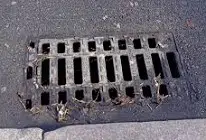 The Latin word pluviālis came to Spanish as pluvial . This is what is called what is linked to rain : the water that falls from the clouds.
The Latin word pluviālis came to Spanish as pluvial . This is what is called what is linked to rain : the water that falls from the clouds.
Air humidity, temperature and atmospheric pressure affect the phenomenon that begins with the condensation of vapor found in the clouds and ends with the fall of water on the earth's surface. Rainwater is known as stormwater .
The rainwater network , on the other hand, is made up of various elements that are responsible for collecting water from rain and transferring it to an appropriate discharge site . In this way, flooding in urban areas is avoided.
Generally, cities have gutters (ditches) on the sides of the streets that receive rainwater. These ditches act as channels and carry water to sinkholes , which are openings for water to leave the surface and go to an underground level.
Once underground, the rainwater is introduced into conduits (known as drains or desaguaderos ): thus, piped, it reaches its appropriate mouth, which is usually a river . As can be seen, the rainwater network is essential in any urban development, otherwise the rainwater would not drain.
It is important to keep in mind that buildings also have storm drains so that the accumulation of water does not generate humidity in the structures . There are different types of storm drains in buildings: through pipes, through gutters, etc.
When rainwater accumulates on the roof of a building, it stagnates and causes various damages, both to the structure and to the community of neighbors. In addition to the potential filtration that can lead to the emergence of fungi and the progressive deterioration of the walls, puddles of water attract various insect pests that reproduce at high speeds and can cause discomfort or illness to people and animals that live in the walls. proximities.
 Moisture on walls and ceilings can also negatively affect people's health, especially those who suffer from a disorder such as asthma. It is highly harmful to breathe in a room where there are fungi , especially if we do it while we sleep. For these and other reasons, storm drainage is absolutely necessary in a building; It is a tool that can prevent many problems of various levels of severity, and in fact it is mandatory in most cities.
Moisture on walls and ceilings can also negatively affect people's health, especially those who suffer from a disorder such as asthma. It is highly harmful to breathe in a room where there are fungi , especially if we do it while we sleep. For these and other reasons, storm drainage is absolutely necessary in a building; It is a tool that can prevent many problems of various levels of severity, and in fact it is mandatory in most cities.
It is important to note that after a structural expansion of a building, the storm drain networks must also be expanded. In some cases it becomes necessary to rethink your connections, or it can even be done voluntarily with the aim of improving the system . Patios should be sloped such that water can travel toward drains without passing through covered areas; Once the entire route is finished, it must end at the curb to continue its path through the urban conduits until reaching its previously established destination.
Of course, in some towns there is no public underground drainage system, so the streets can flood even though the homes have storm drains. In a case like this, the negative consequences of moderate rain can be avoided; However, a storm can cause the water level to reach part of the buildings, so that even if they divert the water into the street, they suffer great deterioration .
Climate change has taken more than one city by surprise with certain meteorological phenomena that in the past never took place on their lands. Some of those that did not usually receive significant rainfall were not prepared with the necessary rainfall systems for the strong storms that currently hit them, and this can lead to catastrophic flooding, simply due to a lack of foresight .
